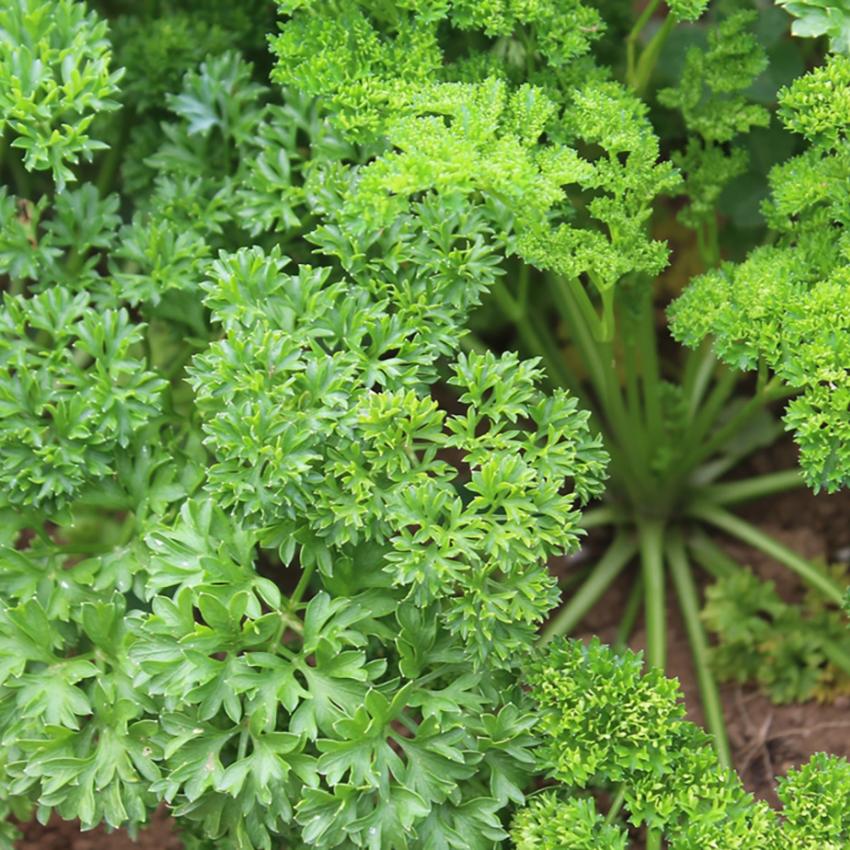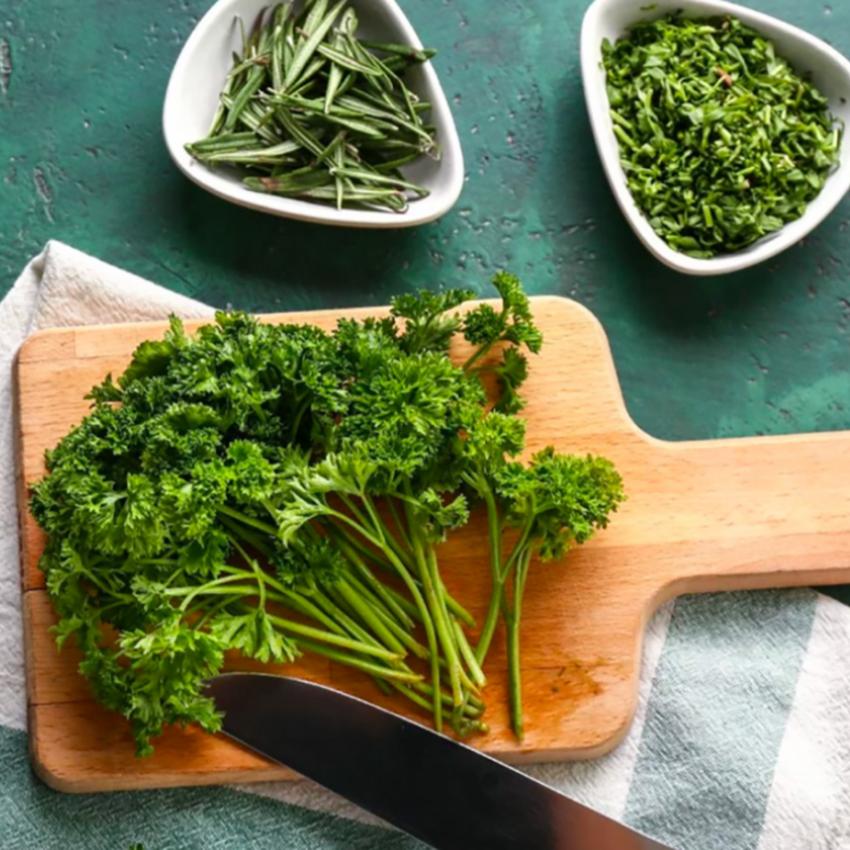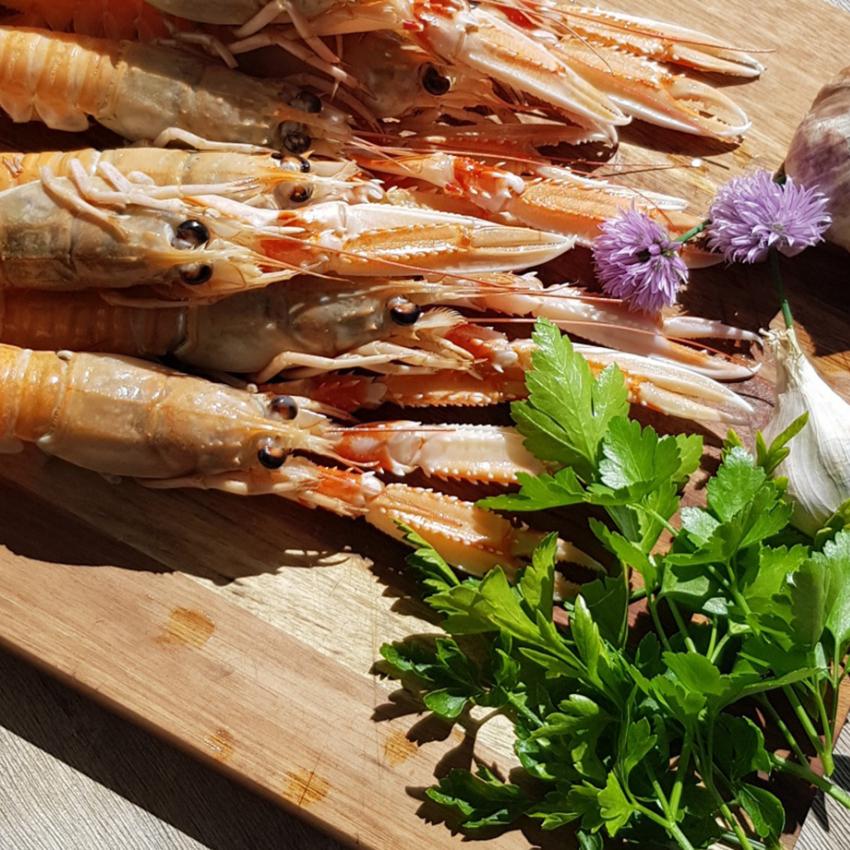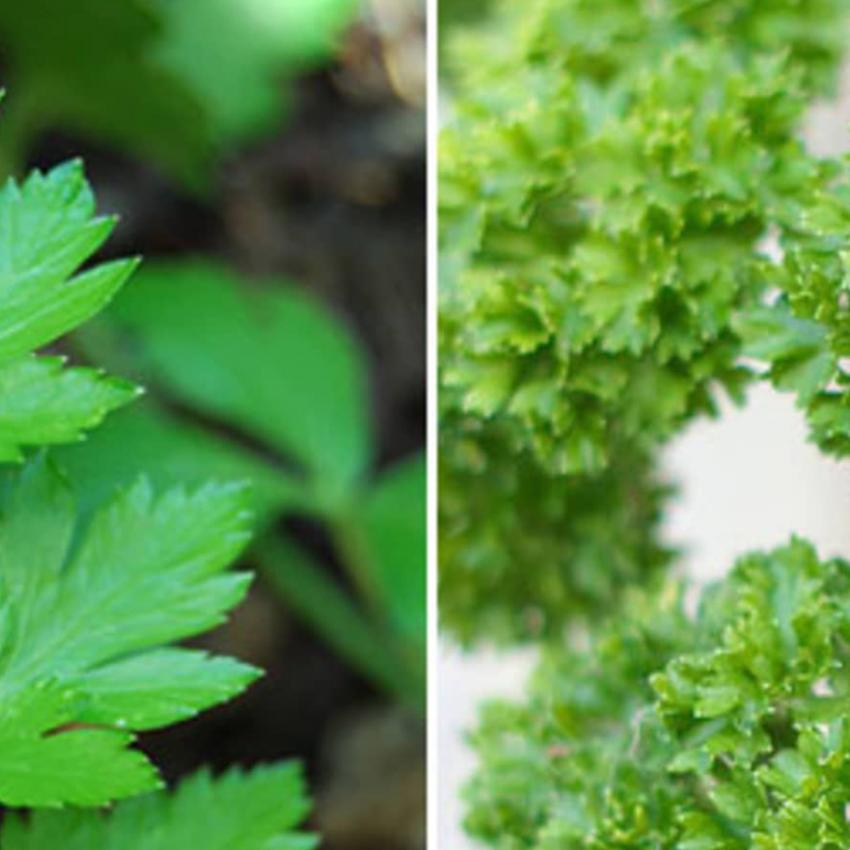



Parsley
Petroselinum crispum
The word "parsley" is a merger of Old English ‘petersilie’ (which is identical to the contemporary German word for parsley) and the Old French ‘peresil’, both derived from Medieval Latin ‘petrosilium’ which is the latinization of the Greek ‘petroselinon’ (rock-celery) from ‘petra’ (stone) + ‘selinon’ (celery).
Parsley or garden parsley is a species of flowering plant in the family Apiaceae that is native to the central and eastern Mediterranean region and is widely cultivated as an herb and a vegetable.
Parsley is widely used in European, Middle Eastern, and American cuisine. Curly leaf parsley is often used as a garnish. Flat leaf parsley is similar but has a somewhat stronger flavor.
In central Europe, eastern Europe, and southern Europe, as well as in western Asia, parsley is used frequently as a garnish on potato dishes, on rice dishes (risotto or pilaf), meat and in stews (shrimp creole, beef bourguignon, goulash, chicken paprikash...). In southern and central Europe, parsley is part of the ‘bouquet garni’ used in stocks, soups, and sauces. Freshly chopped green parsley is also used as a topping for green salads and open sandwiches with cold cuts or pâtés. Persillade is a mixture of chopped garlic and parsley in French cuisine. Parsley is the main ingredient in Italian salsa verde that is typically served with bollito misto or fish. In Brazil, freshly chopped parsley is one of the main ingredients in the seasoning called cheiro-verde (literally "green aroma"), which is used in major Brazilian dishes. Parsley is a key ingredient in salads such as Lebanese tabbouleh. It is also often mixed in with the chickpeas and/or fava beans while making falafel (giving the inside of the falafel its green color).

Find the plant...
